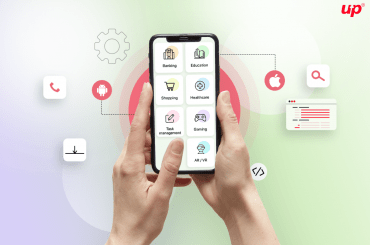When the COVID-19 crisis extends through Europe and the US to new epicenters, corporations are struggling to prepare responses. Due to the unpredictability of disease dynamics, a lack of appropriate professional knowledge and the lack of plug-and-play guidance from government or foreign authorities, there are no simple answers.
According to the review of the high-frequency data on proxies for the movement of people and products, development and trust, China appears to be in the early stages of an economic rebound. Although this recovery could be fragile if a new wave of local infections occurred, several Chinese businesses have already switched to recovery and post-recovery preparation beyond crisis response.
We have learned 12 early lessons for leaders elsewhere, based on their experience helping Chinese companies with their recovery plans. China has its own distinct political and administrative structures, as well as social traditions, but many of the concepts seem generally relevant here.
 Look ahead, and reframe your actions constantly.
Look ahead, and reframe your actions constantly.
Crises have a highly dynamic trajectory by nature which needs a constant reframing of mental models and plans. Initial confusion gives way to exploration and making sense, then crisis preparation and response, recovery strategy, post-recovery strategy, and lastly, reflection and learning. This process must be quick — and therefore directed by the CEO —to avoid getting caught in complicated internal management processes and responding slowly to changing conditions.
Many of the fastest-recovering companies in China proactively looked ahead and expected these changes. For example, Master Kong, a leading instant noodle and beverage manufacturer, analyzed daily dynamics in the early stages of the outbreak, and periodically reprioritized efforts. As a result, the supply chain had improved only a few weeks after the outbreak by more than 50 percent, and it was able to supply 60 percent of the stores that were reopened during this period — three times as many as its rivals.
Also Read: Ecommerce App Development Cost in 2022
Using a bottom-up, pragmatic approach to supplement the top-down initiatives.
Rapid, organized responses warrant leadership from the top down. But responding to rapid change often involves decentralized initiative-taking, with distinct complexities in different societies. Some Chinese companies combined the two strategies successfully, creating a top-down structure through which employees innovated.
For example, Huazhu, which operates 6,000 hotels in 400 cities across China, formed a crisis task force that met daily to review procedures and provided top-down guidance for the entire chain. It also leveraged its internal information portal, an application called Huatong, to ensure that employees and franchisors were armed with timely information. This allowed franchisees to adapt central guidelines, in terms of disease conditions and local public health programs, to their local circumstances.
Proactively build transparency and workplace health.
In a crisis, when the situation and the available knowledge continuously change, guided by the exponential mechanism of contagion, it’s hard to find clarification. For practical purposes, official advice can be missing, inconsistent, out-of-date or not granular enough. Additionally, a multitude of media outlets with varying viewpoints and suggestions intensify the uncertainty. Employees will continue to embrace new ways of operating, but unless they have straightforward, concise knowledge and general guidance, they will not be able to do so.
Some Chinese companies provided very constructive guidance and employee support. For example, China’s largest manufacturer of kitchenware, Supor, has implemented very detailed organizational guidelines and procedures for its workers, such as directives for restricting exposure when dining in canteens and emergency measures for irregular circumstances. Moreover, from the early stages of the outbreak, the organization instituted safety checks for employees and their families and procured protective equipment. It was well prepared to resume work in time, reopening some production lines in the second week of February.
Flexible redeploy research to various tasks.
Employees were unable to carry out their daily operations in hard-hit industries, such as restaurants. Many innovative Chinese firms, rather than furloughs or layoffs, deliberately reassigned workers to new and beneficial tasks, such as disaster planning, or even loaned them to other businesses.
For example, more than 40 restaurants, hotels, and cinema chains streamlined their staffing to free up a significant proportion of their workforce in response to a drastic fall in revenue. O2O teams, including Ele, Meituan, and JD’s 7Fresh, have followed the lead by borrowing restaurant labor.
Adjust the balance of the channel revenues.
In affected areas, personal-to-person and brick-and-mortar retailing is severely limited. Agile Chinese companies rapidly redeployed distribution activities to new platforms in both B2C and B2B businesses.
For example, during the crisis, cosmetics firm Lin Qingxuan was forced to close 40 percent of its stores, including all its Wuhan locations. Nevertheless, the company redeployed its 100 + beauty advisors from those stores to become online influencers who leveraged digital resources like WeChat to digitally connect consumers and boost online sales. As a result, its revenue in Wuhan increased by 200 percent compared to the revenue of the previous year.
Try opportunities despite adversity.
Although China’s crisis has affected all sectors to some degree, demand has increased in many particular areas at a more granular level. Which include e-commerce B2C (especially door-to-door models), e-commerce B2B, remote meeting services, social media, products for grooming, health insurance, and other product categories. Some Chinese players were swift to mobilize to meet these needs.
Read Also: Ecommerce App Development Cost in 2022
For example, Kuaishou, a $28 billion social video site, supported online education services to counter the closing of schools and universities. The company and other video networks have collaborated with the Education Ministry to open a national online cloud classroom to support students. And a major chain of restaurants leveraged downtime to prepare a new semi-finished dishes range, catching the increased demand and potential for home cooking during the crisis.
Conclusion:
Several trends are likely to continue after the crisis and many industries are likely to reemerge into new business realities in China and beyond. Indeed, the SARS crisis is also credited with speeding up e-commerce adoption in China.










